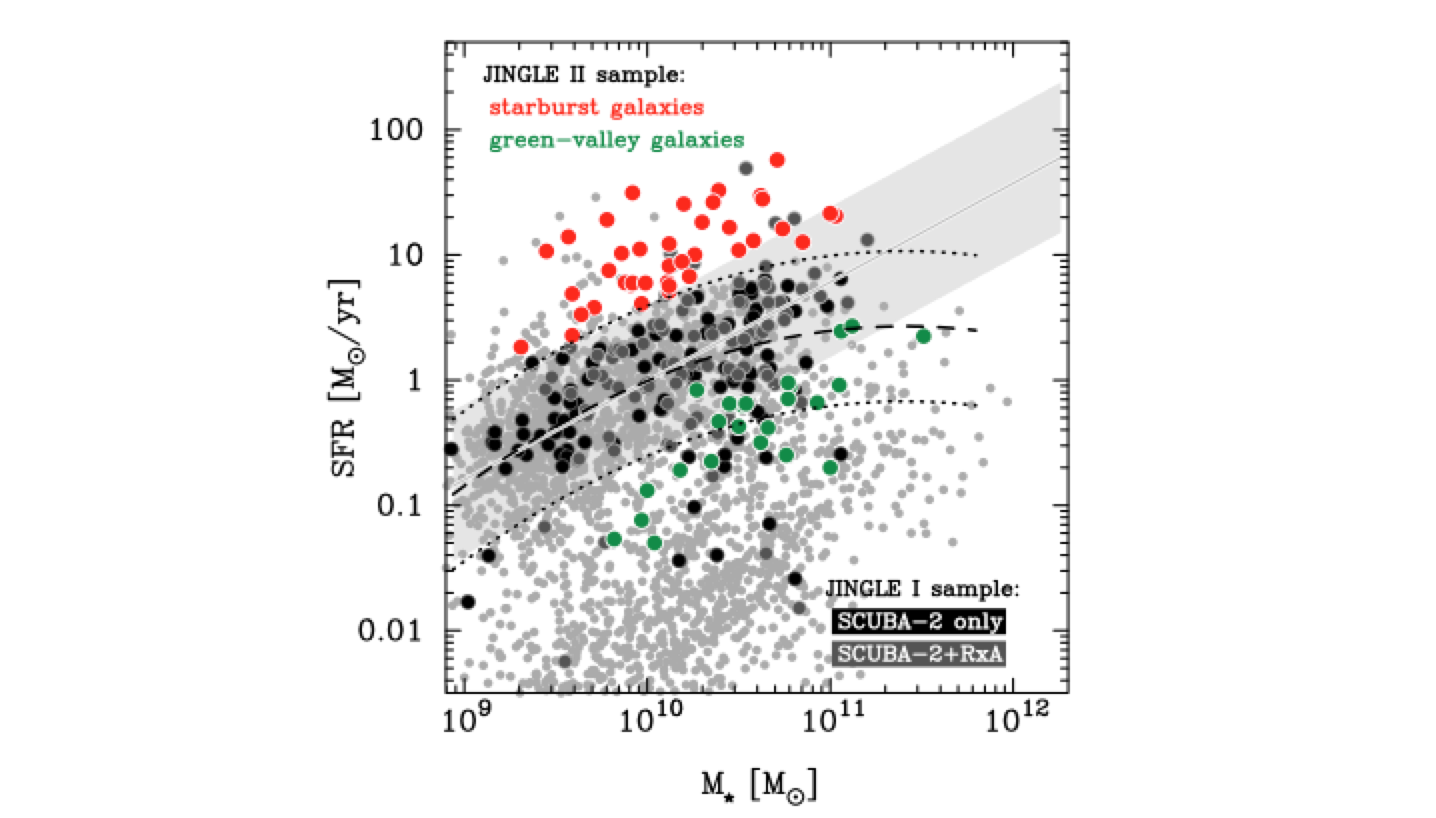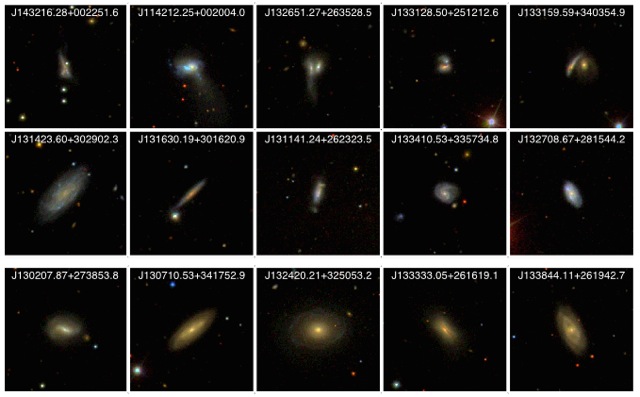Extending the JCMT dust and gas In Nearby Galaxies Legacy Exploration (JINGLE) to galaxies above and below the galaxy main sequence
The JCMT Large Project JINGLE is studying the gas and dust content of 200 nearby (z<0.05) galaxies predominantly residing on the main sequence of star-forming galaxies. JINGLE II extends JINGLE to galaxy populations occupying other regions of the SFR-stellar mass plane. JINGLE II will run from Feb. 2020 to January 2023 and has been allocated 381 hours of observing time with Nāmakanui/`Ū`ū for CO(2-1) spectroscopy of starburst and green-valley galaxies (see Fig. 1). A further 64 hours of SCUBA2/850μm time were allocated to measure dust-continuum fluxes for the starbursts.

Distribution of the JINGLE I & II targets and the parent galaxy sample (light grey dots) in the SFR-stellar mass (M★) plane. Galaxies targeted by the current JINGLE Large Program (JINGLE I) generally lie on the galaxy main sequence. Galaxies targeted by JINGLE II lie either above the main sequence in the high-sSFR starburst regime (red dots) or are green valley galaxies (green dots) with generally low SFRs compared to normal star-forming galaxies. For the selection of starbursts two main-sequence shapes discussed in the literature were considered: (1) a single power law SFR ~ M★0.8 and (2) a curved MS with flattening at high masses.
The main science drivers of the JINGLE II project are:
- To determine the relative importance of gas content and star-formation efficiency for producing the most vigorously starbursting galaxies in the local Universe.
- To assess whether there are different ‘flavours’ of starburst galaxies by comparing the gas and dust properties of (i) outliers to the galaxy main sequence displaying interaction signatures, and of (ii) visually unperturbed starbursts (Fig. 2)

Examples of starburst (1st/2nd row) and green-valley galaxies (3rd row) targeted by JINGLE II.
Upper row – morphologically disturbed, merging starburst galaxies; middle row – generally unperturbed starbursts with disk-like structure. Some of these show traces of minor interactions (e.g. central stamp in this row). Lower row – green valley galaxies.
- To constrain the role of molecular gas for quenching the star formation activity of galaxies by investigating whether quenching is due to a depletion of gas reservoirs or a reduction of the star-formation efficiency.
- To provide crucial calibrations for high-z gas mass estimates relying on monochromatic dust continuum fluxes, by quantifying how L’CO/L850 ratios vary across a broad range of galaxy properties.
Our JINGLE II targets are selected from fields with MaNGA optical integral-field spectroscopic coverage, have mid- to far-IR photometry from WISE and the Herschel-ATLAS survey and coverage from upcoming, new, blind interferometric HI surveys. We will make extensive use of the JINGLE I data base to compare the interstellar medium properties of the outlier populations, which are the focus of this program – i.e. starbursts and green valley galaxies – with those of ‘normal’ main sequence galaxies.
Coordinators: M. Sargent (UK), L.-H. Lin (EAO/Taiwan), T. Xiao (EAO/China), C. Wilson (Canada), H. S. Hwang (EAO/Korea), Y. Koyama (EAO/Japan)



